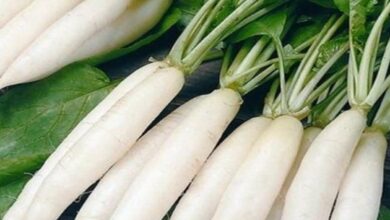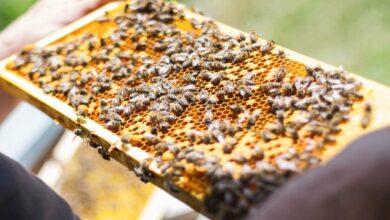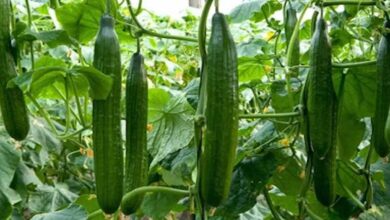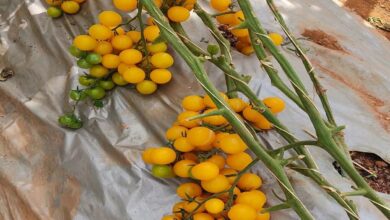Lac Farming: This farmer got great success from lac farming, earning huge profits annually
Lac Farming: With his diligence and commitment, Milan Singh Vishwakarma, a forward-thinking farmer from Chhattisgarh’s Mahasangh district, has established a new name for himself at Lac Farming. Milan Singh, who has been in this business for 22 years, switched from conventional farming to lac production. He has since received several prizes at the district, state, and federal levels and is making enormous sums of money every year.
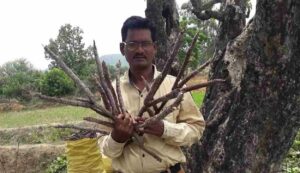
His use of contemporary agricultural techniques and scientific methodologies has made Lac agricultural a viable and successful enterprise. The success of forward-thinking farmer Milan Singh Vishwakarma serves as evidence of how farming may be changed to generate more revenue by using the proper technical knowledge, consistent work, and contemporary techniques. Tell us about his success story in full today in such a scenario.
Lac Farming’s transition from conventional farming
Milan Singh, a forward-thinking farmer, has faced several challenges throughout his life. He just completed his 12th grade education before deciding to turn farming into his career. In the past, he grew basic crops like paddy and other conventional crops. But he did not make enough money from this. But he was drawn to Lac Farming by his diligence and inventiveness.
Beginning of Lac Farming
In 2002, his district was visited by agricultural experts from the Indian Institute of Natural Resins and Gums (IINRG), Ranchi. They claimed that productivity and profit might rise significantly if Lac Farming used modern practices rather than outdated ones. Following this, Milan Singh used new methods and gave careful consideration to the scientists’ recommendations. His income thus grew by a factor of ten.
26 acres of Land are used for Lac Farming
Presently, Milan Singh, a forward-thinking farmer, is growing Lac on 26 acres of land. He has planted plants like Palash, Ber, and Semialata on this property. They engage in mixed cropping, which consists of oilseed crops, legumes, and vegetables, in addition to lac farming. This raises their revenue even more.
Advanced Lac Varieties
Kusumi and Rangini lac are the two main types of lac that Milan Singh grows.
- Kusumi lac: July through January and January through July are the growing seasons for this crop. Because of its superior quality, it commands a higher premium on the marketplace.
- Rangini lac: July through November and November through July are the growing seasons for this crop. However, lac takes eight months because of the unfavorable weather from November to July.
Production of Lac and Market Value
Milan Singh states that 17–36 degrees Celsius is the best temperature range for lac farming. At this temperature, lac grows more effectively.
- Each acre of Kusumi lac yields 6–10 quintals.
- Rangini Lac: Especially when grown on plum trees, yields 8–20 quintals per acre.
In the market, lac costs around Rs 700 per kilogram. To save farmers from having to pay more for transportation, traders themselves come to purchase lac from the farmers’ houses. For Milan Singh, lac farming has therefore turned out to be a lucrative endeavor.
Issues and fixes in Lac Farming
Infestation of pests and fungi in the crop is one of the difficulties in lac farming. Fungal outbreaks are more common, particularly during the wet season. Milan Singh employs innovative methods and seeks guidance from scientists to address these issues. In his crops, he also applies organic treatment, which guards against fungus and pests. According to Milan Singh, farmers may maximize their profits from Lac Farming if they perform the appropriate actions on their fields at the appropriate times.
Advantages of Farming Lac
According to Milan Singh, Lac Not only does farming benefit farmers, but it also benefits the environment. Lac is used in many different sectors to make a wide range of items. Lac, for example, is used to create imitation jewelry, combine patterns, and create other ornamental objects. In addition, lac is used to make tape, glue, and other resin-based goods, and its demand is only growing. Growing lac may help farmers live better lives.
In addition, Lac Farming is good for the environment. The presence of lac plants, particularly palash and plum trees, improves the environment’s greenness and preserves the land’s quality. Climate change can be managed with the aid of these plants. Economically speaking, lac farming is also advantageous. It gives farmers the chance to make more money from their conventional farming labor.


